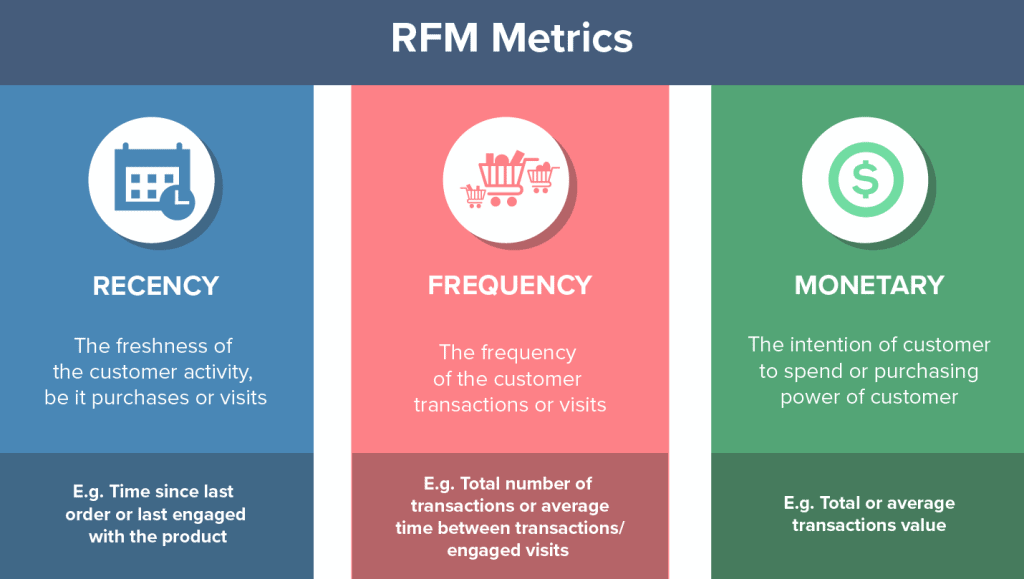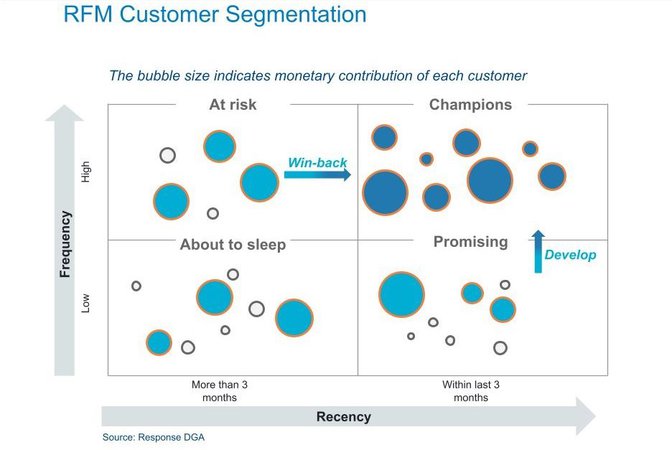What is RFM? Why Does Customer Segmentation Matter?
As a marketing professional, you may find yourself beating your brains out over acquiring new customers in order to optimize targeting and costs. But wait a minute. How about the customers who already made purchases? They’ve already given their trust in your product. Are they still using your product? What if they only bought for once? Would you let them go so easily? This is where RFM (Recency, Frequency, Monetary) metrics step in.
RFM is a marketing model that allows you to segment your customers based on their transaction history. You can divide your customers into groups by how recently they made their last purchase (recency), how often they purchase (frequency), and how much they spent in total (monetary).
What is RFM Metrics?

Recency: How long has it been since a customer transacted with your brand? The more recently a customer purchased the more that customer will be responsive to your promotions.
Frequency: How often has the customer made purchases during a specific period of time? The more customers purchase frequently the more they are engaged and satisfied with your brand.
Monetary: What’s the total value of purchases a customer has made? Monetary value helps you see the difference between the high spenders and low spenders.
You need to understand your customers’ behavior first before sending them campaigns in order to minimize marketing costs and improve ROI. According to DMA (Data and Marketing Association), “77% of email marketing ROI came from segmented, targeted, and triggered campaigns.” Instead of reaching out to all of your audience with un-targeted campaigns, RFM helps you focus on a smaller segment of customers and tailor your marketing strategy accordingly.
RFM model answers the following questions
- Who are the most valuable customers for your business?
- Which customers are close to churning?
- Which customers can be retained?
- For which customers you shouldn’t focus your marketing efforts?
- For which customers you should run targeted marketing campaigns to increase sales?
You can segment your customers into four (or more) categories as you see in the chart below.
Customer Segmentation through RFM model

Champions are your loyal customers who often buy your products and recently made purchases. Big bubbles among champions represent your key accounts that have the highest customer lifetime value. You need to engage them, ask for their reviews, and reward them as they will promote your brand.
“Promising” customers have recently made purchases. You can develop them into champions by building relationships by providing onboarding support, offering memberships, loyalty programs, and free trials. You can also send them educational content to create brand awareness and increase engagement with your brand.
Customers “At risk” are the ones who used to purchase often but haven’t made any purchase recently. You need to run surveys or utilize any other data sources to understand why they stopped making purchases. You can reactivate them by sending personalized emails, making limited time offers and recommendations based on their last purchase.
Customers “About to sleep” aren’t frequent buyers and they haven’t purchased for a long time. You can offer special discounts and recommend popular products, especially for the ones who made a big purchase.
Advantages of RFM Segmentation
As you’d agree, different customers react to different messaging. RFM Segmentation makes you ask the right questions about customers’ behavior and compare customer segments. Customer segmentation will show you which campaign will be relevant to which group of customers and turn out to be the most profitable for your business.
RFM will help you have a better understanding of your business, target your customers with personalized strategies and get better ROI on your marketing campaigns. You will improve user engagement and retention, increase customer loyalty and have a higher customer lifetime value.
At Response DGA, we do research and provide insights into customer behaviors through Digital Segmentation so that you can reach customers interested in your business by audience targeting. Response DGA helps you create highly relevant and targeted campaigns, leading to higher conversions for your brand.
Write a Comment